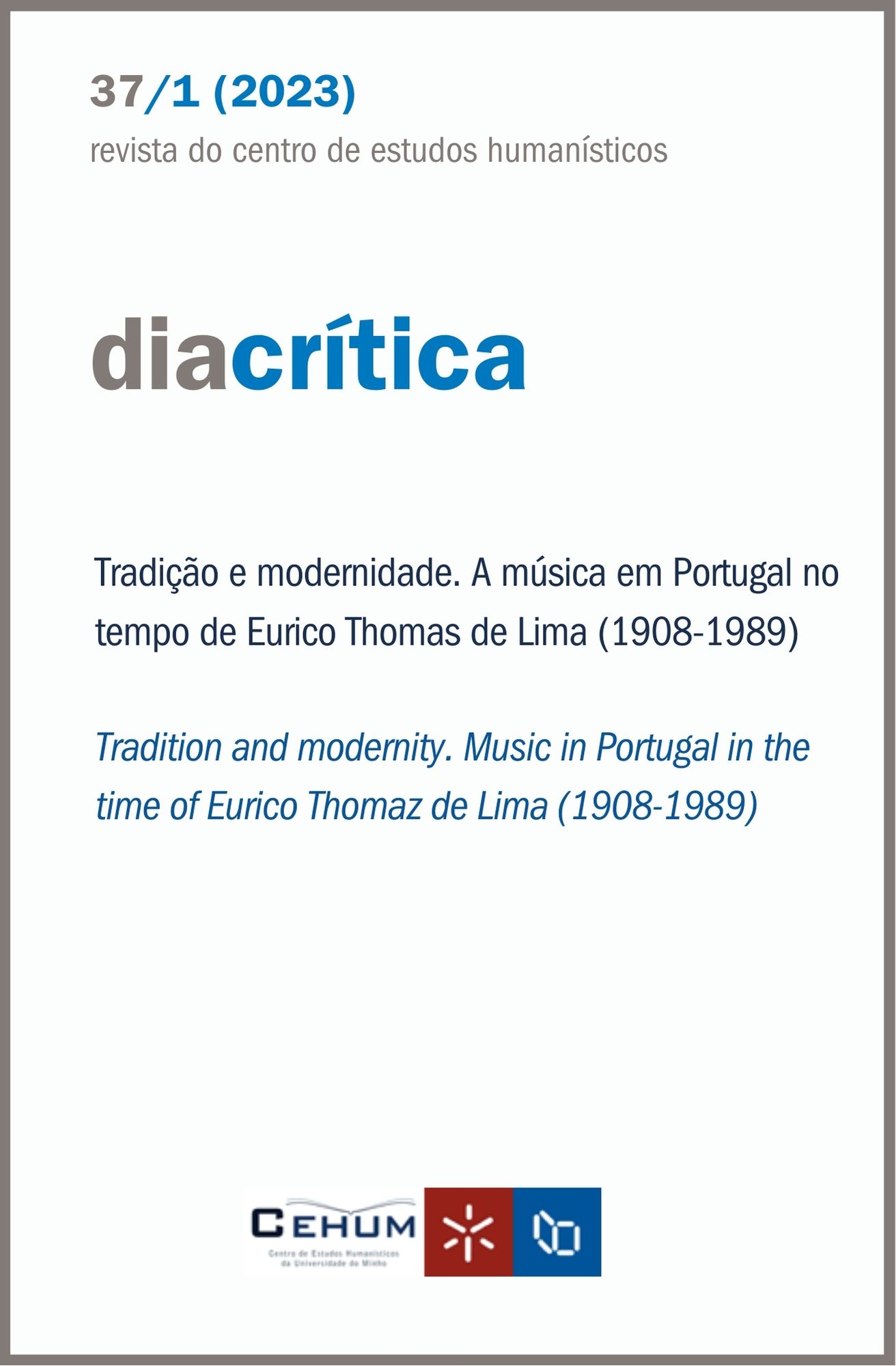Introduction
DOI:
https://doi.org/10.21814/diacritica.5402Keywords:
Eurico Thomaz de Lima, Musical Art, Tradition and ModernityAbstract
This issue of Diacrítica takes the figure of Eurico Thomaz de Lima as a point of reference and brings together a series of studies on his artistic career as a pianist, composer and pedagogue. Heir to the German-influenced Central European romantic tradition of the 19th century, Eurico, as well as being a virtuous performer, reveals in his piano works a taste for national roots and a pianistic language close to that of his master Vianna da Motta (1868–1948). Alfredo Pinto (Sacavem), in one of his Lisbon Chronicles, published weekly in Correio do Minho in the 1920s and 1930s, said that the last exam of Eurico Thomaz de Lima's virtuosity course was "a brilliant exam". Curiously, the pianist asked him to write in the local newspaper that he would very much like to play in Braga, which would only happen many years later, when he started teaching at the city's conservatory.
References
Momentos da Vida, Crónicas de Lisboa. (1929, junho 14). Correio do Minho. Biblioteca Pública de Braga.
Thomaz de Lima, E. (1966, dezembro 11). O compositor Eurico Thomaz de Lima. Diário de Notícias. Espólio Eurico Thomaz de Lima [Álbum “Ilha da Madeira (1965–1967)”]. Universidade do Minho.
Downloads
Published
How to Cite
Issue
Section
License
Copyright (c) 2023 Elisa Lessa, David Cranmer

This work is licensed under a Creative Commons Attribution-NonCommercial 4.0 International License.










